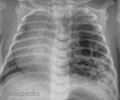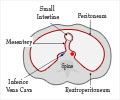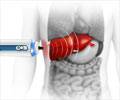A patient-driven effort to provide lung tissue for research may now help doctors predict when patients with idiopathic pulmonary fibrosis (IPF) are becoming dangerously ill
A patient-driven effort to provide lung tissue for research may now help doctors predict when patients with idiopathic pulmonary fibrosis (IPF) are becoming dangerously ill. The new research could also could point the way to interventions that could sustain them until life-saving transplants can be performed.
According to senior author Naftali Kaminski, M.D., associate professor of medicine, computational biology and pathology, and director of the Dorothy P. and Richard P. Simmons Center for Interstitial Lung Diseases at the University of Pittsburgh School of Medicine and UPMC, the research published today in the American Journal of Respiratory and Critical Care Medicine addresses a dilemma in IPF care that currently is unsolved."Approximately 10 percent of patients develop an acute phase that in most cases is lethal," Dr. Kaminski explained. "There has been very little understanding of the molecular basis of this syndrome, but because of the dedication of our patients and their families, we are getting closer to some answers."
For most patients, the lung-scarring disease progresses gradually and lung function slowly deteriorates. But there is neither a cure nor effective treatment, so median survival is about three years. For unknown reasons, some IPF patients experience rapid declines that cause diffuse damage of the lung alveoli, the tiny sacs where the exchange of oxygen and carbon dioxide occurs.
To better understand the molecular mechanisms of disease exacerbation or, as Dr. Kaminski puts it, acceleration, the researchers compared the gene activity profile of the lungs of eight IPF patients whose disease was dramatically worsening when they died with those of 23 stable IPF patients and 15 people with healthy lungs.
In the first analysis of its kind, "gene activity patterns were found to be more similar among all IPF patients compared to healthy people," said lead author Kazuhisa Konishi, M.D., a visiting postdoctoral fellow in Dr. Kaminski's lab who performed the gene profiling. "But nearly 600 genes were differentially expressed between IPF patients who had accelerated disease and those who were stable."
There was no evidence that infection or inflammation was the cause of disease acceleration, he noted. Instead, there were indications that the cells of the alveolar epithelium, which is the tissue that covers the surface of the air sacs, were rapidly dying.
Advertisement
To test whether the changes in the lungs could be revealed in the blood, the Pitt investigators contacted Dr. Kaminski's longtime collaborator, Dong Soon Kim, M.D., a renowned IPF researcher at Asan Medical Center and the University of Ulsan in Seoul, South Korea, who has been at the forefront of studying the acceleration syndrome. With her help, they found that levels of a protein called alpha-defensin were particularly high in the blood of patients experiencing an exacerbation. If the findings are verified with more research, which is underway, the proteins could be the first biomarker blood tests that doctors could track to identify patients at risk for sudden deterioration of lung function.
Advertisement
If not for the altruism of IPF patients, the research and its promising results would not have been possible, Dr. Kaminski noted. The IPF tissue samples used for the study were collected through the Simmons Center's warm autopsy program, which is the only one for lungs in the world.
Several years ago, an IPF patient told Kathleen Lindell, Ph.D, R.N., the Simmons Center nurse, a quality of life researcher and a study co-author, that he wanted to aid research efforts by donating his lungs to science after death. In response, she developed the warm autopsy program.
"The tissue has to be collected within six hours of death, so it demands a great deal of flexibility and commitment on the part of caregivers and family," Dr. Lindell said. "The gene components of the lung cells degrade very quickly, so without the warm autopsy protocol, we couldn't have done the activity profiling that was the foundation of this research."
Source-Eurekalert
RAS














